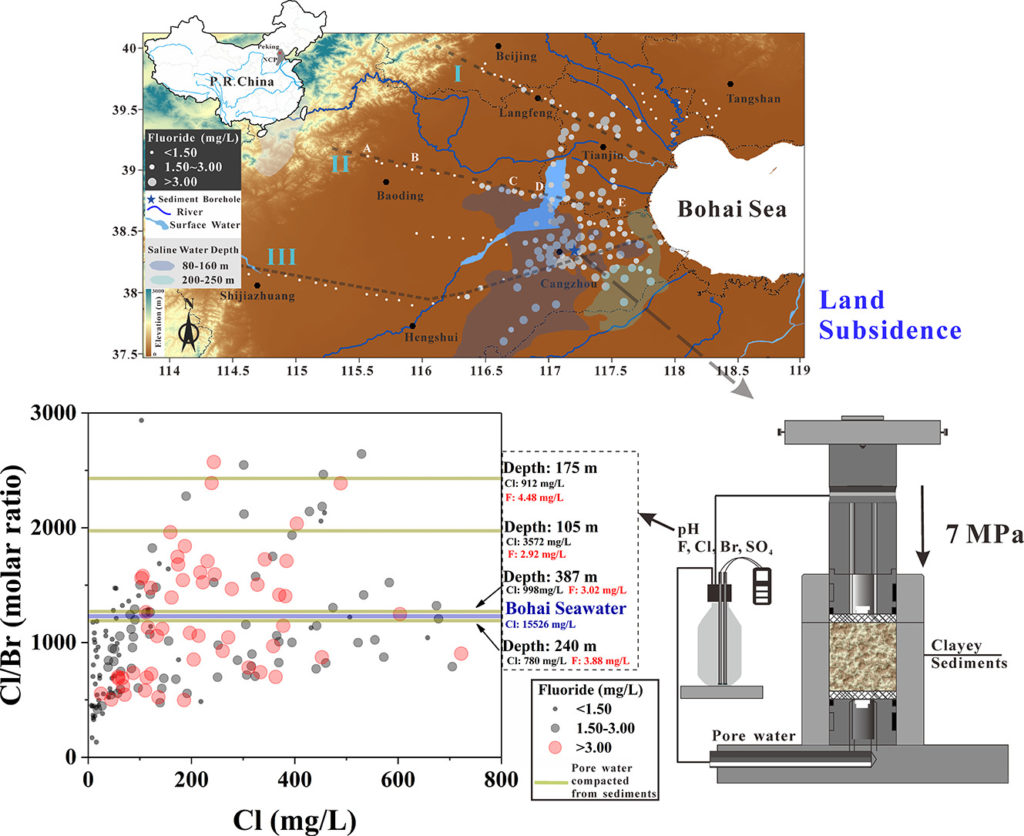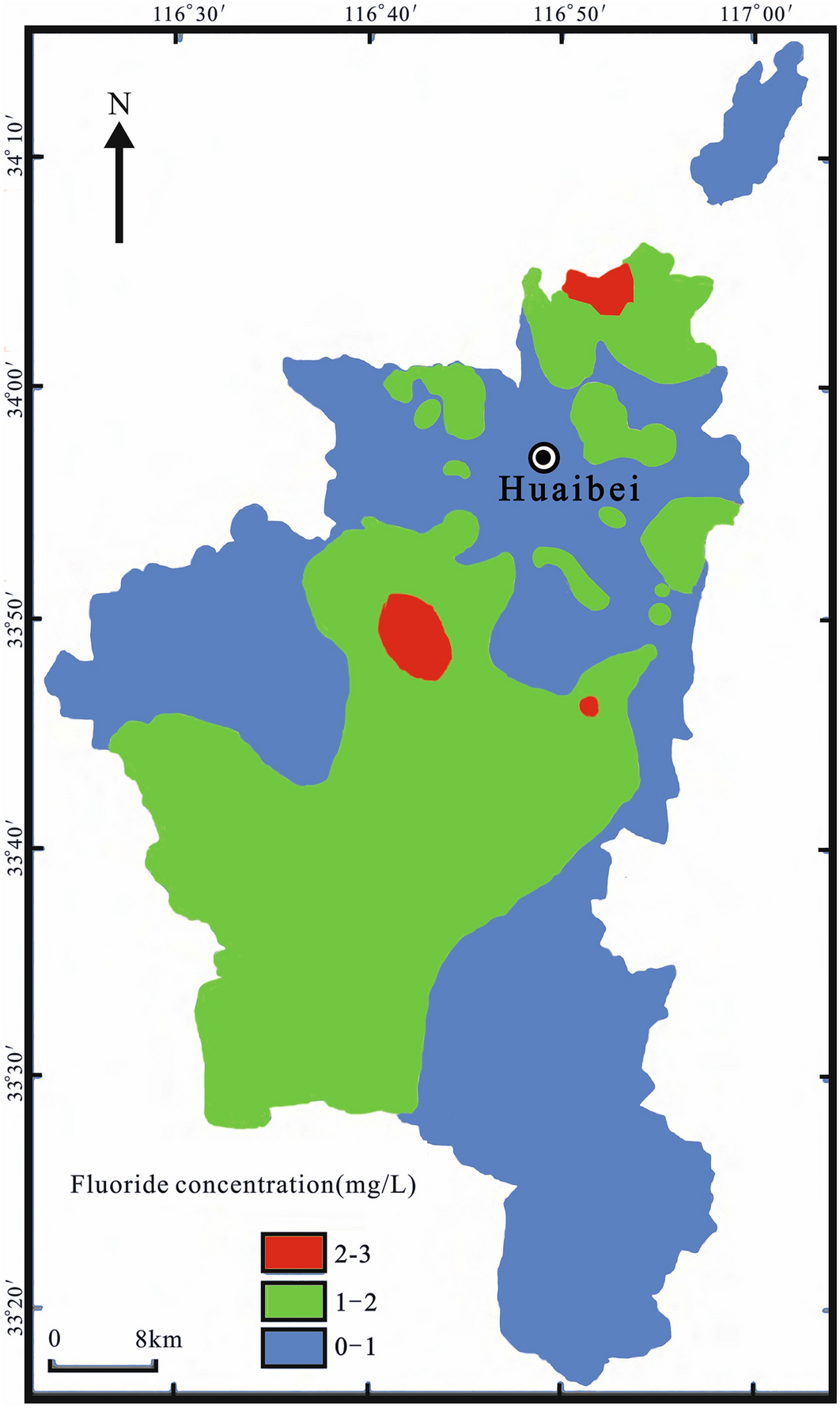China
Of note:
2011 – $2.14 billion project underway to relocate 392,000 people due to fluoride-contaminated water. China Daily, March 29.
2011 – Hebei Province: 3.48 million rural residents get access to safe drinking water. Xinhua, December 4.
2012 – $4.5 billion spent in 2012 for safer drinking water. China Daily, December 31.
2013 – Call for Transparency Over China’s Water Quality. By Yang Fan for Radio Free Asia. July 1.
2013 – China gears up to tackle tainted water. Nature 499, 14–15, July 4.
2017 – Development of China’s Public Health as an Essential Element of Human Rights. XinhuaNet, Oct 2.
2024 – Preplanned Studies: Spatial-Temporal Analysis of Drinking Water Type of Endemic Fluorosis — China, 2009–2022. Bt Zhao et al.
“… There has been a notable decline in the detection rate of dental fluorosis in children aged 8–12 years in drinking water fluorosis areas across the country from 2009 to 2022…”
January 12, 2024. Preplanned Studies: Spatial-Temporal Analysis of Drinking Water Type of Endemic Fluorosis — China, 2009–2022. CCDC Weekly 6(2):25-29. By Zhao L, Li Z, Li M, Sun H, Wei W, Gao L, Zhao Q, Liu Y, Ji X, Li C, Wang J, Gao Y, Pei J.
- Endemic fluorosis, caused by high fluoride levels in drinking water, has been a significant health issue in rural areas of China for many decades.
- There has been a notable decline in the detection rate of dental fluorosis in children aged 8–12 years in drinking water fluorosis areas across the country from 2009 to 2022. While 14 provincial-level administrative divisions are classified as low-probability clusters, Tianjin remains classified as a high-probability cluster.
- The current policy for preventing and controlling endemic fluorosis in China needs adjustment. Rather than focusing solely on regions with high incidence, there should be a shift towards monitoring and early warning of fluoride exposure. Additionally, local containment measures should be intensified.
September 1, 2022. The effect of mining development in karst areas on water acidification and fluorine enrichment in surface watersheds. BY Ecotoxicology and Environmental Safety, 242:113954.
Highlights:
-
- The weathering of carbonates and sulfide-rich coal measures induced a pH as low as 2.29.
- The dissolution of fluorapatite and fluorite is an important source of fluorine.
- The chloro-alkaline indices displayed a strong ion exchange process in the basin, promoting the release of fluorine in silicate minerals.
- In the upstream alkaline water, the main occurrence form of fluorine was free F–, while the main occurrence form of fluorine in acidic water was likely AlF2+.
August 18, 2022. Contrasting behaviors of groundwater arsenic and fluoride in the lower reaches of the Yellow River basin, China: Geochemical and modeling evidences. By Graphical abstract:

May 24, 2022. Enrichment mechanisms for the co-occurrence of arsenic-fluoride-iodine in the groundwater in different sedimentary environments of the Hetao Basin, China. By Li Z, Cao W, Ren Y, Pan D, Wang S, Zhi C. Science of The Total Environment, May 24.
Highlights:
-
- Sedimentary environment is the key factor to control the As, F, I distribution.
- Four sedimentary zones were divided on the basis of Clay-sand ratio, clay layers and terrain slope.
- High As and I is distributed in paleochannel zone with strong reducing environment.
- High F comes from the fluorine-rich bedrock surrounding the basin.
April 18 2022. Hydro-geochemical control of high arsenic and fluoride groundwater in arid and semi-arid areas: A case study of Tumochuan Plain, China. By Dong S, Liu B, Chen Y, Ma M, Liu X, Wang C. Chemosphere 301:134657.
Highlights
- The enrichment of arsenic in groundwater is closely related to salt content of aquifer medium.
- Reduction environment caused by high organic matter content is key to arsenic enrichment.
- Alkaline environment has great influences on the enrichment of fluoride and arsenic compounds.
- Dissolution balance between carbonate minerals and fluorite controls the content of fluoride.
April 12, 2022. Spatial and seasonal variability, control factors and health risk of fluoride in natural water in the Loess Plateau of China. By Wang W, Li Z, Su H, Xiao J, Han F, Li Z. Journal of Hazardous Materials.
Graphical Abstract:

January 16, 2022. Fluoride contamination, spatial variation, and health risk assessment of groundwater using GIS: a high-density survey sampling in Weifang City, North China. By Liu J, Ma Y, Gao Z, Zhang Y, et al. Environmental Science and Pollution Research.
Excerpt: “Overall, the health risk distribution area of GW [ground water] fluoride in WFC [Weifang City] is decreasing in the following order: infants > children > teenagers > adults.”
2021 – Predicting geogenic groundwater fluoride contamination throughout China. Journal of Environmental Sciences 115:140-148. By Cao H, Xie X, Wang Y, Liu H.
• High fluoride groundwater risk map was generated.
• Climate variables are the most important indicators.
• High fluoride risk areas comprise a total of 27.6% of the country.
• About 89 million rural people are at health risk due to fluoride exposure.
• The risk map can be used by authorities to prioritize fluoride mitigation.
August 3, 2021. Hydrogeochemical evidence for fluoride behavior in groundwater and the associated risk to human health for a large irrigation plain in the Yellow River Basin. Science of The Total Environment, by Chen J, Gao Y, Qian H, Ren W, Qu W.
Excerpt: The order of vulnerable segments of the population in terms of risk posed by F in GW [groundwater] was: infants > children > adults.
Graphical abstract

June 30, 2021. Geochemical controls on the enrichment of fluoride in the mine water of the Shendong mining area, China. Chemosphere 284:131388, by Zhang Z, Li G, Su X, Zhuang X, Wang L, Fu H, Li L.
Graphical abstract:

May 15, 2021. Predicting geogenic groundwater fluoride contamination throughout China. Journal of Environmental Sciences 115:140-148. By Cao H, Xie X, Wang Y, Liu H.
Excerpt:
-
- High fluoride groundwater risk map was generated.
- Climate variables are the most important indicators.
- High fluoride risk areas comprise a total of 27.6% of the country.
- About 89 million rural people are at health risk due to fluoride exposure.
- The risk map can be used by authorities to prioritize fluoride mitigation.

May 4, 2021. Fluoride and nitrate contamination of groundwater in the Loess Plateau, China: Sources and related human health risks. Environmental Pollution 286:117287, by Su H, Kang W, Li Y, Li Z.
April 16, 2021. Simulation study on the migration of F- in soil around Chagan Lake, China. Environmental Science and Pollution Research International [Epub ahead of print], by Xu P, Bian J, Wu J, Li Y, Li J, Zeng X, Lin Z.
April 16 2020. Spatial distribution and potential health risk of fluoride in drinking groundwater sources of Huaibei, Anhui Province. Scientific Reports, by Hu Y, You M, Liu G, Dong Z.
January 2021. A characterization of groundwater fluoride, influencing factors and risk to human health in the southwest plain of Shandong Province, North China. Ecotoxicology and Environmental Safety, by Liu J, Peng Y, Li C, Gao Z, Chen S.

Fig. 1. Map showing the southwest plain region of Shandong Province, China as well as locations of groundwater sampling points.
December 2020. Effects of water improvement and defluoridation on fluorosis-endemic areas in China: A meta-analysis. Environmental Pollution, by Wang F, Li Y, Tang D, Zhao J, Yang X, et al.

October 2020. Land-use change caused by anthropogenic activities increase fluoride and arsenic pollution in groundwater and human health risk. Journal of Hazardous Materials, by Li Y, Bi Y, Mi W, Xie S, Ji L.
This graphic is from Qiying Zhang, Panpan Xu, Hui Qian, Faxuan Yang. September 2020. Hydrogeochemistry and fluoride contamination in Jiaokou Irrigation District, Central China: Assessment based on multivariate statistical approach and human health risk. Science of the Total Environment, 7:140460.

2020 – Hydrogeochemical and statistical analysis of high fluoride groundwater in northern China. By Feng F, Jia Y, Yang Y, et al. Environmental Science and Pollution Research, July 8.
2020 – Hydrogeochemical processes controlling the mobilization and enrichment of fluoride in groundwater of the North China Plain. By Li J, Wang Y, Zhu C, Xue X,Qian K, Xie X, Wang Y. Science of The Total Environment, April 23.

2020 – Poor groundwater quality and high potential health risks in the Datong Basin, northern China: research from published data. By He X, Li P, Wu J, Wei M, Ren X, Wang D. Environmental Geochemistry and Health, February 25.
2020 – Spatial distribution of fluoride in drinking water and health risk assessment of children in typical fluorosis areas in north China. By Zhang L, Zhao L, Zeng Q, Fu G, et al. Chemosphere, January.

2019 – Assessment of water quality of best water management practices in lake adjacent to the high-latitude agricultural areas, China. By Liu X, Zhang G, Xu YJ, Wu Y, Liu Y, Zhang H. Environmental Science and Pollution Research International, December 16.
2007 – Total fluoride in Guangdong soil profiles, China: Spatial distribution and vertical variation. By Chu L Zhang HH, Xia B, Xu DR. Environmental International 33(3):302-308.


